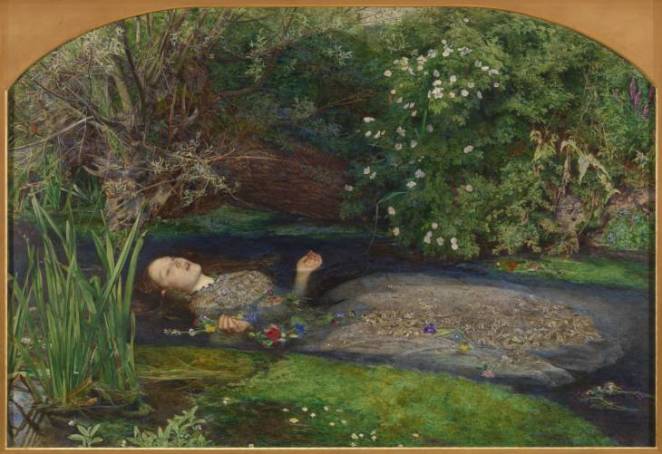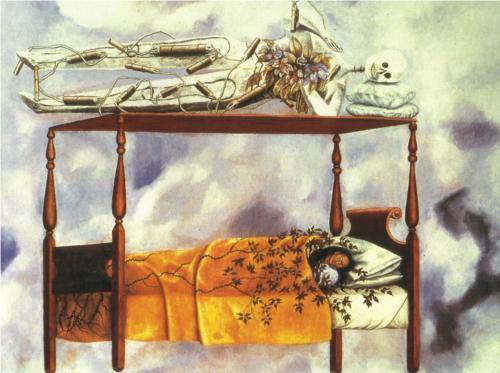
Ophelia – Millais, 1852 Tate
In Kristeva’s Powers of Horror, the abject reflects the human reaction to the threat of breakdown in meaning correlative to the loss of the distinction between subject and object, self and world. Reference to the corpse represents a traumatic loss of identity and functions as the exemplary reminder of our materiality. Mary Shelley’s monster personifies both the corruption of knowledge and power. As an aesthetic representation of the conflation of Science and Nature, Frankenstein is a sublime object. In clinical terms, the monster is an uncanny figure of paranoid knowledge. Millais’ dead object gestures to the uncanny nature of sublime memory; unconsciously, we sense the terrifying knowledge that we already know. Kahlo’s self-portrait represents a form of life-writing that symbolizes the painter’s connection to the natural world. The figure of Death in the image suggests an imaginative network of proleptic meaning on the nature of life experience.
